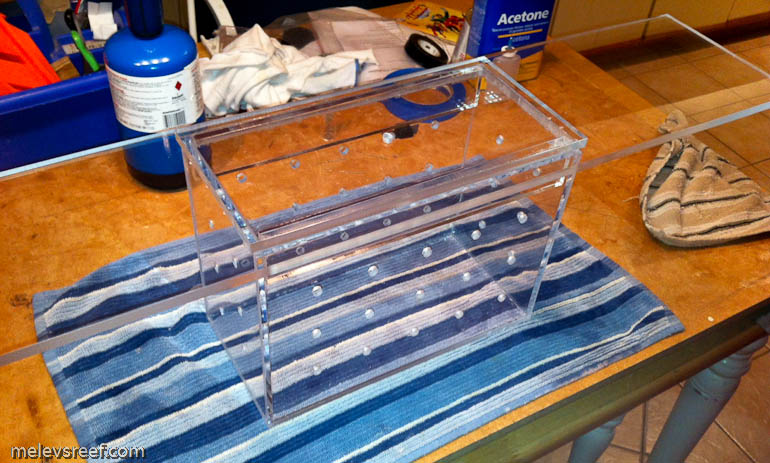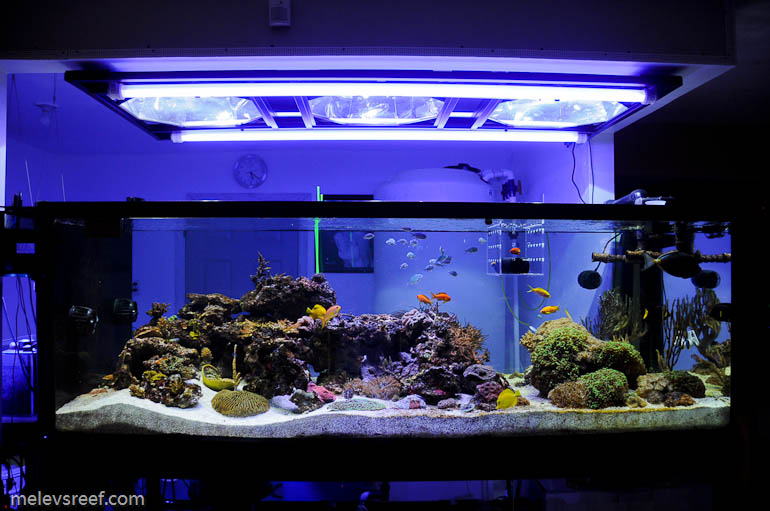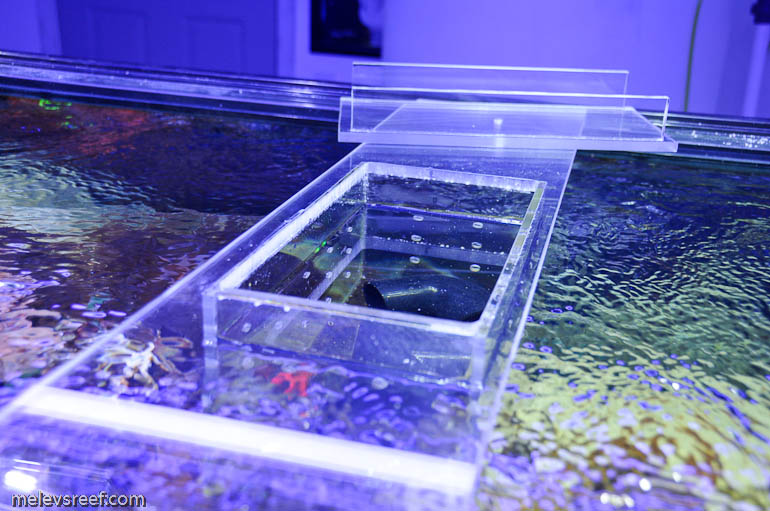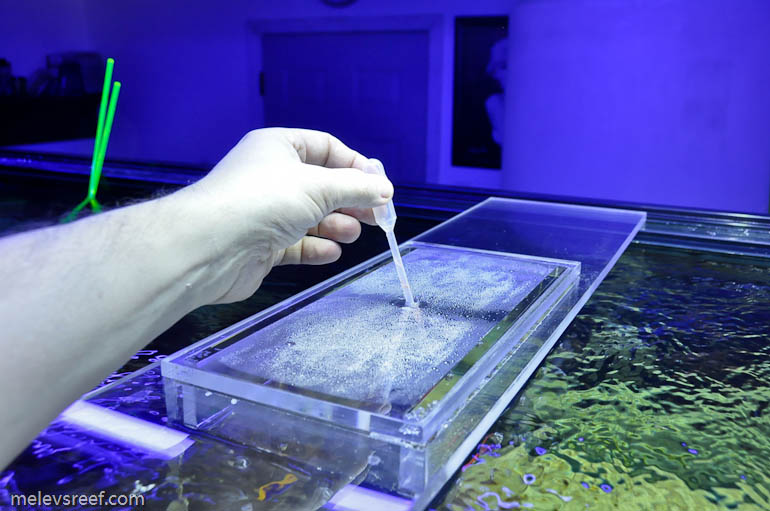Introducing new fish into an existing set up
by
, 02-11-2012 at 07:52 AM (18724 Views)
It is always a challenge to add new fish to an established reef, primarily because of territorial issues. Each fish in the tank has already picked out their favorite haunt, and they are not prepared to share space with a newcomer. As hobbyists, we always try to come up with ways that might work: dump them in and pray, add them after lights out, introduce many at once (shock and awe), or put them in a section divided off from the rest of the reef.
Several years ago, a friend of mine made a "Social Acclimation" box that hung in his tank. He runs Triggers Systems, the company that builds beautiful acrylic gear. He has a CNC-router to fabricate nearly anything, and I kept thinking I really need to buy one from him for my tank. He would put new fish in it (as well as damaged fish) to keep them in the system but safe from any neighbor aggression. In recent years, new boxes are available like Reef Gently or CPR's First Aide. These boxes didn't fit my particular set up. The front and back panel of my tank is 3/4" glass. The eurobracing is 1" thick. What would hold the box where I needed it, and would have the space to hold any fish I might add?
Yesterday evening, I had new fish drip-acclimating... and two dwarf angels still in my quarantine tank, essentially in the way of the newer arrivals. I decided it was time I made a box that fit my needs. This box would have to hang in the center of the tank, be supported on the eurobracing, allow circulation of water, and keep jumpers inside. Using 1/4" cast acrylic for the box itself, I drilled 42 holes 5/16" in diameter. Each hole took about 90 seconds to drill, if not two minutes. Drilling faster would have chipped the material, but I wanted this to look clean and professional so I had to take my time.
The box hangs between the front and back panels, and doesn't interfere with the Penductor returns. It is 11 3/4" long, 6" wide, and 8" tall. The top section was made with 3/8" acrylic to reduce bowing (it is 33 1/4" long and 7" wide), and a 3/8" thick lid was placed on top to keep jumpers in the box. A hole in the lid was drilled to add food easily via pipette.
The two temporary dwellers are: a Flame Angel (Centropyge loriculus) and an African Flameback Angel (Centropyge acanthops).
After the box had time to cure for an hour or two, I routed it and installed it. Black PVC fittings give the fish a place to duck into in case anything spooked them, like an aggressive fish or even my activity near the tank. The key is to keep the fish stress free and visible to the others so that once released, they are less inclined to fight.
The lid was reinforced with some 3/8" rails to help prevent bowing, but it probably will do so just the same. Acrylic will absorb moisture, and the lighting from above adds heat to the opposite side. The rails are 1.5" tall, so perhaps it will keep its shape for the most part.
I'll keep the fish in the box for a few days and watch the interaction as well as any curiosity by my reeflings. As soon as the fish are released into the reef, I'll remove it and clean it up for next time. It might be practical to use when fragging and gluing corals into the tank, giving me a spot to put down tools or set down corals in the water prior to final placement. I may call this thing "The Peacemaker" unless something else better pops into my head.





















